
2. To define and explain viral taxonomy
3. To differentiate taxonomic and ecologic viral classification
4. To relate viral disease diagnosis to viral structure and host cell damage
Specific educational objectives (terms and concepts upon which you will be tested)

Each viral family can be discussed based on the human diseases caused by members of that family.
Family Parvoviridae (parvoviruses)
These are the smallest of the DNA-containing viruses. The linear DNA is single stranded and contains three to four genes. The virion is a naked icosahedron with 32 capsomers. The word parvo is taken from the Latin word parvus meaning small. The members of this family causing human infections are:
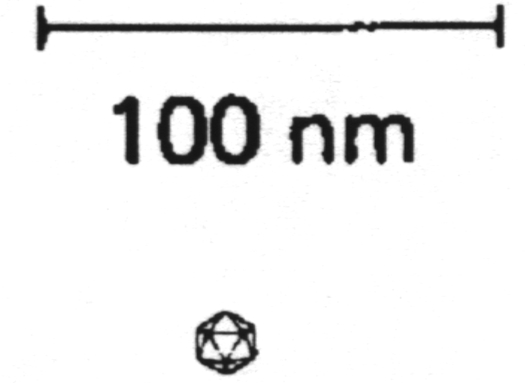
Adeno-associated virus - cryptic in mucosal epithelial cells
The family name is taken from the disease caused by members of the group i.e., Papilloma, Polyoma and Vacuolating viruses. These are small DNA-containing viruses. The DNA is double-stranded and circular and contains five to eight genes. The virion is naked icosahedron with 72 capsomers. Members of this family include:
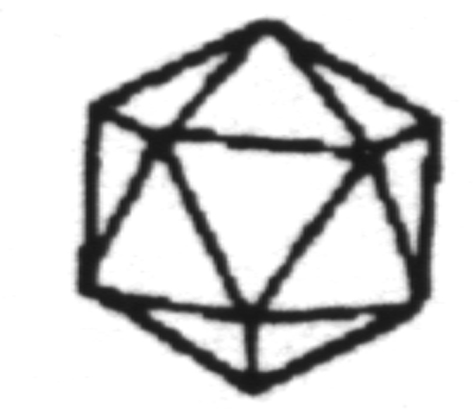
BK virus - causes a nephritis and/or urethritis
JC virus - etiological agent of progressive multifocal leukoencephalopathy
The original virus in this group was isolated from adenoid tissue, thus the name adenovirus. The 89 members of this group all have double-stranded DNA which contains about 30 genes. The virion is a naked icosahedron. All members of this group have a common family antigen in the hexon capsomer and a second group-specific antigen in the penton capsomere. Species are determined by individual type-specific antigens found in the hexon capsomer. From the vertex at each of the 12 penton capsomers extends a long fiber with a knob at its end. This fiber contains a hemagglutinin that is antigenically distinct for each serotype. As a result, one can determine type specificity using a hemagglutinin inhibition test.


Adenovirus, serotypes 11,21 - causes acute hemorrhagic cystitis
Adenovirus, serotypes 8,11,19,37 - causes epidemic keratoconjunctivitis
Adenovirus, serotypes 40,41 - causes gastroenteritis
Adenovirus, serotypes 1,2,3,5 - causes hepatitis
The family name is taken from the Greek verb, herpein, meaning "to creep." The name refers to the fact that the members of this family often cause latent recurring infections which progress slowly. These are medium-sized, enveloped, viruses containing double-stranded DNA.
Genetically, this is the second most complex family of viruses; there are about 160 genes in each species. The virion is an icosahedron with 162 capsomeres. There are eight human serotypes:
Human herpesvirus 2 (herpes simplex virus type 2)
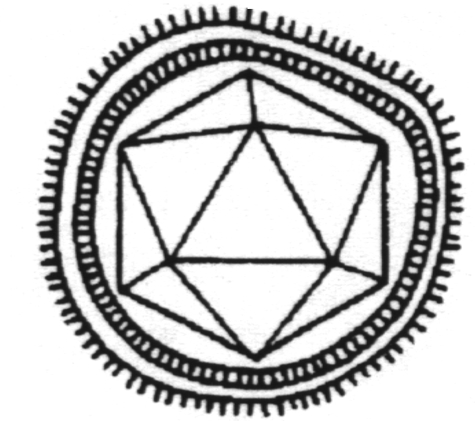
gingiva stomatitis - vesicles and ulcers in the mouth
herpes genitalis - vesicles and ulcers on genitalia
herpes labialis (cold sores, fever blisters) - vesicles and ulcers of lips
herpes gladiatorum - clusters of vesicles and ulcers on skin encephalitis keratoconjunctivitis
whitlow (felon) a purulent infection involving the pulp of the distal phalanx of a finger
Human herpesvirus 3 (varicella-zoster virus) - this virus causes:
shingles (zoster) - peripheral nerve cell infection with an eruption in the overlying epidermis
Burkitt's lymphoma
oropharyngeal carcinoma
cytomegalic inclusion disease (salivary gland disease) - a generalized and often fatal disease of the newborn
Human herpesvirus 8 - causes Kaposi's sarcoma in AIDS patients
Human herpesvirus 7 - causes a cryptic infection of the T-helper cell Cercopithecine herpesvirus 1 (B virus, herpesvirus simiae) - causes a fatal encephalitis
The family name is taken from the major disease symptom caused by these organisms, the pox. The pox is an elevated lesion of the skin. The members of this family are the largest of all the viruses and are considered to be an evolutionary intermediate between the viruses and the bacteria. The viral particles (sometimes called elementary bodies) are somewhat rounded, brick-shaped, or ovoid, and have a complex structure consisting of an internal central mass, the nucleoid, surrounded by two membrane layers. The surface is covered with ridges which may be tubules or threads. All poxviruses are related immunologically by a common internal antigen. They are divided into genera on the basis of their more specific antigens, nucleic acid homology, morphology and natural hosts. The entire replication cycle occurs in the cytoplasm. The viruses causing human disease include:

Monkeypox virus - the agent of monkeypox, a disease similar to smallpox but with the additional symptoms of cervical and inguinal lymphadenopathy
Vaccinia virus - used to vaccinate against smallpox. It causes a localized exanthem through epithelial cell infection.
Cowpox virus - the agent of cowpox, a self-limiting disease resulting in vesicles and pustules of the hands
Orf virus - the agent of contagious pustular dermatitis, an epithelial cell infection
Pseudocowpox virus - the agent of pseudocowpox (Milker's nodules, paravaccinia). This is an epithelial cell infection.
Molluscum contagiosum virus - this causes molluscum contagiosum, a self-limiting infection of epithelial cells
Yaba monkey tumor virus - this causes a histiocytoma of the head or limbs Tanapox virus - causes tanapox, a self-limiting epithelial cell infection
The family name comes from the major disease caused by members of this group (hepatitis) and the type of nucleic acid found in the virion (DNA). These are enveloped viruses with a complex capsid symmetry. The nucleic acid is circular and partially double-stranded and encodes four genes.

Reproduced by permission of The New England Journal of Medicine, W.S. Robinson and L.I. Lutwick, Volume 295, p. 1235, Figure 7, ©1976, Massachusetts Medical Society. All rights reserved.
The family name comes from the word, pico, meaning small and RNA denoting the type of nucleic acid found in these viruses. These are naked viruses containing sufficient single stranded RNA to code for six to nine genes. They are the smallest of the RNA viruses. The naked virus has icosahedral symmetry with 32 capsomers. The members of this family causing human disease are:
Coxsackie A virus (23 serotypes) - the agent of: herpangina; an infection of oral mucosal cells aseptic meningitis common cold, an upper respiratory tract infection epidemic myalgia (pleurodynia, Bornholm disease, devil's grip), a pleura and abdominal muscle infection hand, foot, mouth disease, an infection of epithelial cells of the skin and oral mucosa
Coxsackie B virus (6 serotypes) - the agent of: aseptic meningitis epidemic myalgia (pleurodynia, Bornholm disease, devil's grip), a pleura and abdominal muscle infection myocarditis pericarditis
ECHOvirus (32 serotypes) - the agent of:
Boston exanthem, an epithelial cell infection cerebellar ataxia pneumonitis
Rhinovirus (113 serotypes) - agent of the common cold
Hepatitis A virus - agent of infectious hepatitis
Mengovirus
ME virus
Encephalomyocarditis (EMC) virus
MM virus
Columbia SK virus
Hepatitis E virus - the agent of endemic hepatitis, a disease with a high mortality rate among pregnant patients
The name is derived from the phrase "respiratory enteric orphan viruses." The more than 150 members of this group have segmented (10-12 segments) double-stranded RNA which contains 20-30 genes. The virions are naked double icosahedrons with 32 large capsomeres in the outer capsid. The viruses in this family causing human disease are:

From Review of Medical Microbiology, 16th Edition, E. Jawetz, J.L. Melnick, E.A. Adelberg, pp 347, Figure 27-3. Reproduced with permission.
Rotavirus - agent of acute infantile diarrhea, also known as winter diarrhea
The name is derived from the Latin word, toga, meaning "coat," which refers to the fact that the icosahedral virion has an envelope. It is thought that the capsid contains 32 capsomeres. The nucleic acid is single-stranded RNA.
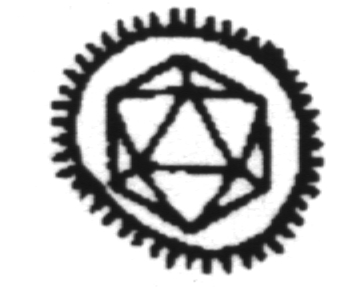
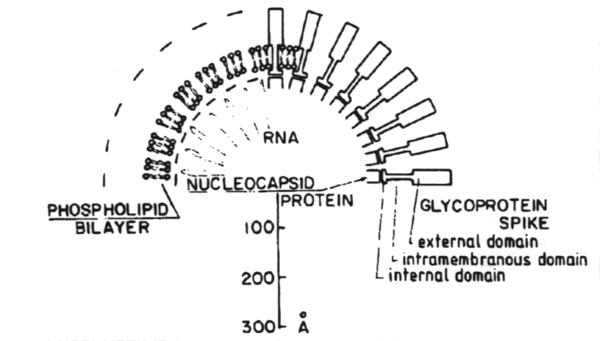
Members of this family are:
Eastern equine encephalitis virus - causes encephalitis
Western equine encephalitis virus - causes encephalitis
Venezuelan equine encephalitis virus - causes encephalitis
Sindbis virus - causes fever, rash, arthritis
Semliki forest virus - causes encephalitis
Chikungunya virus - causes myositis and arthritis
O'nyong-nyong virus - causes fever, rash and arthralgia
Ross river virus - causes fever, rash, arthralgia
The name is taken from the Latin word flavus, meaning "yellow." This refers to the fact that this is the family of the yellow fever virus. These are enveloped viruses containing single-stranded RNA. Their morphology is not well defined. The members of this family causing human disease are:
St. Louis encephalitis virus - causes encephalitis
Dengue virus - causes dengue, a generalized viral infection
Hepatitis G virus - causes acute hepatitis via blood transfusions
West Nile virus - causes a fever, rash, hemorrhage and shock
Japanese B encephalitis virus - causes Japanese encephalitis Murray Valley encephalitis virus - causes Murray Valley encephalitis
Central European tick-borne encephalitis virus - causes encephalitis
Far eastern tick-born encephalitis virus - causes encephalitis
Kyasanur forest virus - causes encephalitis
Louping ill virus - causes encephalitis
Powassan virus - causes encephalitis
Omsk hemorrhagic fever virus - causes a hemorrhagic fever
Kumilinge virus - causes encephalitis
Absetarov anzalova hypr virus - causes encephalitis
Ilheus virus - causes encephalitis
Rocio encephalitis virus - causes encephalitis
Langat virus - causes encephalitis
The name is derived from the Latin word, arenaceous, meaning "sandy." This refers to the electronmicrographs of the virus which show they have a granular or sandy surface. The granular appearance may be due to the presence of ribosomes in the virus. They contain single-stranded segmented RNA. Their complex morphology is hidden with an envelope. These viruses commonly produce chronic carrier states in their host. The members of this family causing human disease are:

Junin virus - agent of Argentinean hemorrhagic fever
Bolivian hemorrhagic fever virus - agent of Bolivian hemorrhagic fever
Lassa fever virus - agent of Lassa hemorrhagic fever
The name refers to a characteristic halo or corona which surrounds each virion. The enveloped virion with a complex morphology contains single-stranded RNA.

From Review of Medical Microbiology, 16th Edition, E. Jawetz, J.L. Melnick, E.A. Adelberg, pp 347, Figure 27-3. Reproduced with permission.
A member of this family causing human disease is the
The name is derived from the fact that these viruses contain a reverse (retro) transcriptase, i.e., RNA-dependent DNA polymerase. This family contains all of the RNA-containing tumor viruses. Superficially they resemble the orthomyxovirus but they have a more complicated internal structure. The segmented RNA contains 20-30 genes.

From Review of Medical Microbiology, 16 Edition E. Jawetz, J.L. Melnick, E.A. Adelberg, pp 347, Figure 27-3. Reproduced with permission
Human infections caused by members of this family include:
Human immunodeficiency virus - causes acquired immunodeficiency syndrome (AIDS)
Human foamy virus - cryptic
This group is named after Bunyamwera, Uganda where the type species virus was isolated. These are enveloped helical viruses containing segmented single-stranded RNA which is of sufficient size to allow for 20-50 genes. All members of this group are spread by arthropods.
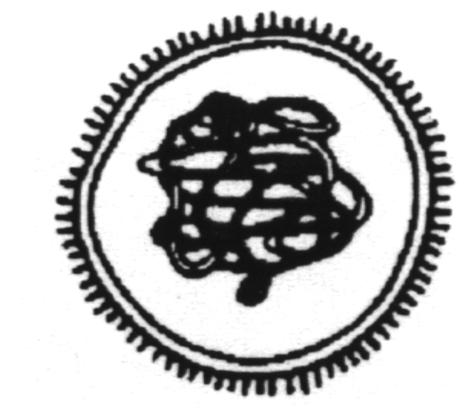
From Review of Medical Microbiology, 16th Edition, E. Jawetz, J.L. Melnick, E.A. Adelberg, pp 347, Figure 27-3. Reproduced with permission.

Members of this family causing human disease are:
Hantaan virus - causes Korean hemorrhagic fever, respiratory/renal disease (Muerto Canyon fever or hantavirus pulmonary syndrome)
Bunyamwera virus - causes encephalitis
Sandfly fever virus - causes a syndrome of fever, myalgia, retroorbital pain and conjunctivitis
Rift valley fever virus - causes a hemorrhagic fever
Crimean-Congo hemorrhagic fever virus - causes a hemorrhagic fever
The members of this family are all influenza viruses which reproduce in mucous membranes. Myxo is a Greek word meaning mucous. The viruses contain a segmented single-stranded RNA genome and exhibit helical symmetry. They have a layer of surface projections, called spikes, as part of their outer wall, as well. These are major antigenic determinants. The genome consists of eight pieces of RNA. They are exceptions to the rule that RNA viruses replicate in the cytoplasm as they replicate in the nucleus. The target tissue is the upper and lower respiratory tract. Members of this family causing human disease are:
Thogotovirus - causes encephalitis
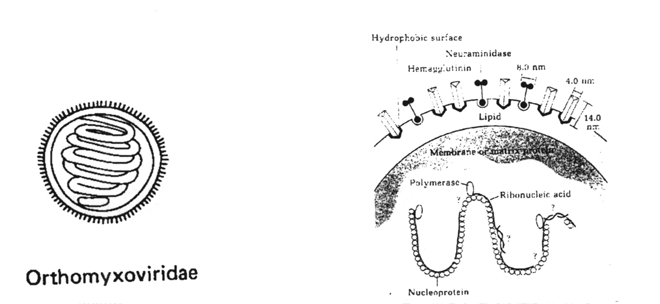
Antibodies to the ribonucleoprotein (RNP) are used to differentiate the three major types of influenza virus (A, B or C). Each of these types may have antigenic variants; these are designated A1, A2 ... or B1, B2, ... or C1, C2, ... The hemagglutinin spikes are labelled H1, H2 ... for antigenic variants and the neuraminidase spikes are labelled N1, N2 ... for antigenic variants. Present terminology of influenza virus type A strains designates the geographic area where the strain was first isolated, the year it was isolated and the antigenic composition of its hemagglutinin and neuraminidase. Thus, an H2 N1 strain of the influenza A1 virus first isolated in Missouri in 1984 would be designated:
The members of this family are morphologically similar to the Orthomyxoviridae but are larger. They exhibit helical symmetry and have an envelope, segmented single-stranded RNA and 15-25 genes.

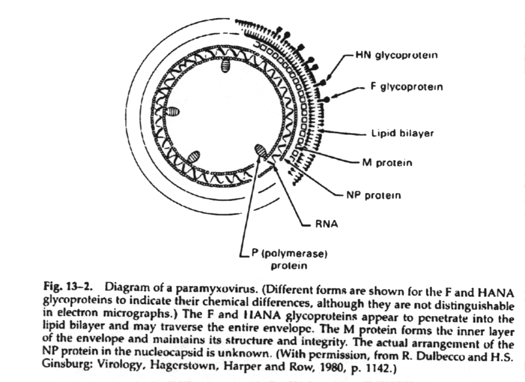
Members of this family causing human disease are:
Mumps virus - causes an infection of the parotid gland
Measles virus (rubeola virus) - causes:
Subacute sclerosing panencephalitis
The family name is derived from the Greek word, rhabdos, meaning mad which refers to the disposition of animals infected with the rabies virus. This is a bullet-shaped virus with an envelope and single-stranded RNA.
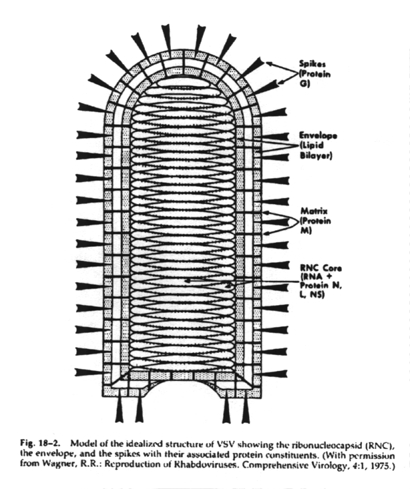
From Fundamentals of Medical Virology, 2nd Edition, Kucera/Myrvik, pp 139, Figure 18-2. Reproduced with permission.
Members of this family causing human disease are:
Rabies virus - causes rabies, an encephalitis
The family name is derived from the filamentous form of the virus. These are enveloped helical nucleocapsids which have a uniform diameter of 80 nm but a variable length up to 14,000 nm. They are pleomorphic with branched, circular and U-shaped forms common. They contain linear single-stranded RNA. These are the most lethal of the human viruses. The target tissue is vascular endothelium. Members of this family include:
Ebola virus - causes acute hemorrhagic fever
Arboviruses
The name indicates that these are arthropod-borne viruses, i.e., they are transmitted by a member of the Arthropoda (insects, mites, ticks, lice). The arboviruses include the Togaviridae (except for the rubella virus), the Bunyaviridae, some of the Rhabdoviridae, some of the Arenaviridae and some of the Reoviridae.
Oncoviruses
Those viruses that are oncogenic or cancer-causing belong in this group. This includes all of the Retroviridae as well as some of the Papovaviridae, Adenoviridae, Parvoviridae, and Herpesviridae. Thus oncoviruses are both RNA- and DNA-containing types.
Unclassified viruses
1. Hepatitis C viruses - A group of viruses which resemble picornaviruses in morphology and are antigenically distinct from hepatitis A and hepatitis B virus. They have single stranded linear RNA and an envelope. They cause acute hepatitis.
2. Hepatitis D virus (Delta agent) - A defective virus which requires coinfection with the hepatitis B virus (a helper virus) in order to replicate. It has circular, single-stranded RNA and an envelope. In reality this is a viroid. However, it has historically been classified as a virus.
3. Astrovirus - A naked five to six-pointed star-shaped virus with single-stranded RNA. It causes acute gastroenteritis. There are five serotypes.
4. Torovirus - The nucleocapsid has a tubular shape which may be bent into an open torus (a bulging projection) conferring a biconcave disk- or kidney-shaped morphology. It contains single-stranded RNA. It causes enteric infections.
2. The Family Parvoviridae, all members of which have linear single-stranded DNA as their chromosome, includes the B11 virus, the agent of fifth disease, bone marrow aplasia and polyarthralgia.
3. The Family Papovaviridae, whose members have circular double-stranded DNA without gaps as their chromosome, includes the agents of warts, nephritis and progressive multifocal leukoencephalopathy.
4. The Family Adenoviridae, members of which contain linear double-stranded DNA as their chromosome, includes the agents of acute respiratory disease (ARD), the common cold, acute hemorrhagic cystitis, epidemic keratoconjunctivitis, gastroenteritis and hepatitis.
5. The Family Herpesviridae, members of which contain linear double-stranded DNA as their chromosome, includes the agents of gingiva stomatitis, herpes genitalis, herpes labialis, herpes gladiatorum, encephalitis, keratoconjunctivitis, chickenpox, shingles, infectious mononucleosis, Burkitt's lymphoma, oropharyngeal carcinoma, cytomegalovirus mononucleosis, cytomegalic inclusion disease, exanthem subitum and Kaposi's sarcoma.
6. The Family Poxviridae, members of which contain linear double-stranded DNA as their chromosome, includes the agents of smallpox, monkeypox, vaccinia, cowpox, orf, pseudocowpox and molluscum contagiosum.
7. The Family Hepadnaviridae, members of which contain circular double-strand DNA with gaps as their chromosome, includes the agent of hepatitis B (serum hepatitis or long-term hepatitis).
8. The Family Picornaviridae, members of which contain linear single-stranded RNA as their chromosome, includes the agents of polio, herpangina, aseptic meningitis, the common cold, epidemic myalgia, hand-foot-mouth disease, myocarditis, pericarditis, Boston exanthem, cerebellar ataxia, pneumonitis and hepatitis A (infectious hepatitis or short-term hepatitis).
9. The Family Caliciviridae, members of which contain linear single-stranded RNA as their chromosome, includes the agents of summer diarrhea and hepatitis E (endemic hepatitis).
10. The Family Reoviridae, members of which contain linear segmented double-stranded RNA as their chromosome, the agents of Colorado tick fever and winter diarrhea. 11. The Family Togaviridae, members of which contain linear single-stranded RNA as their chromosome, includes the agents of rubella, eastern equine encephalitis and western equine encephalitis.
12. The Family Flaviviridae, members of which contain linear single-stranded RNA as their chromosome, includes the agents of yellow fever, St. Louis encephalitis, hepatitis G and dengue.
13. The Family Arenaviridae, members of which contain linear segmented single-stranded RNA as their chromosome, includes the agent of lymphocytic choriomeningitis.
14. The Family Coronaviridae, members of which contain linear single-stranded RNA as their chromosome, includes the agent of the common cold.
15. The Family Retroviridae, members of which contain segmented linear single stranded RNA as their chromosome, includes the agents of human T-cell lymphoma and acquired immunodeficiency syndrome (AIDS).
16. The Family Bunyaviridae, members of which contain segmented linear single-stranded RNA as their chromosome, includes the agents of California encephalitis and hantavirus pulmonary syndrome.
17. The Family Orthomyxoviridae, members of which contain segmented linear single-stranded RNA as their chromosome, includes the agent of influenza.
18. The Family Paramyxoviridae, members of which contain segmented linear single-stranded RNA as their chromosome, includes the agents of parainfluenza, mumps, measles (rubeola), subacute sclerosing panencephalitis and respiratory syncytial disease.
19. The Family Rhabdoviridae, members of which contain linear single-stranded RNA as their chromosome, includes the agents of vesicular stomatitis and rabies.
20. The Family Filoviridae, members of which contain linear single-stranded RNA as their chromosome, includes agents of acute hemorrhagic fever.
21. Arboviruses are those transmitted by arthropods (insects, mites, ticks, lice).
22. Oncoviruses are those which cause cancer.
23. Unclassified viruses include those causing hepatitis C, hepatitis D, astrovirus-associated acute gastroenteritis and torovirus-associated enteritis.
![]()
PreviousLecture
Topof
lecture
Home
NextLecture
![]()